OnePlus 9 Pro vs. Asus ROG Phone 5: Which Android phone wins?
A OnePlus 9 Pro vs. Asus ROG Phone 5 face-off reveals the best Android gaming phone
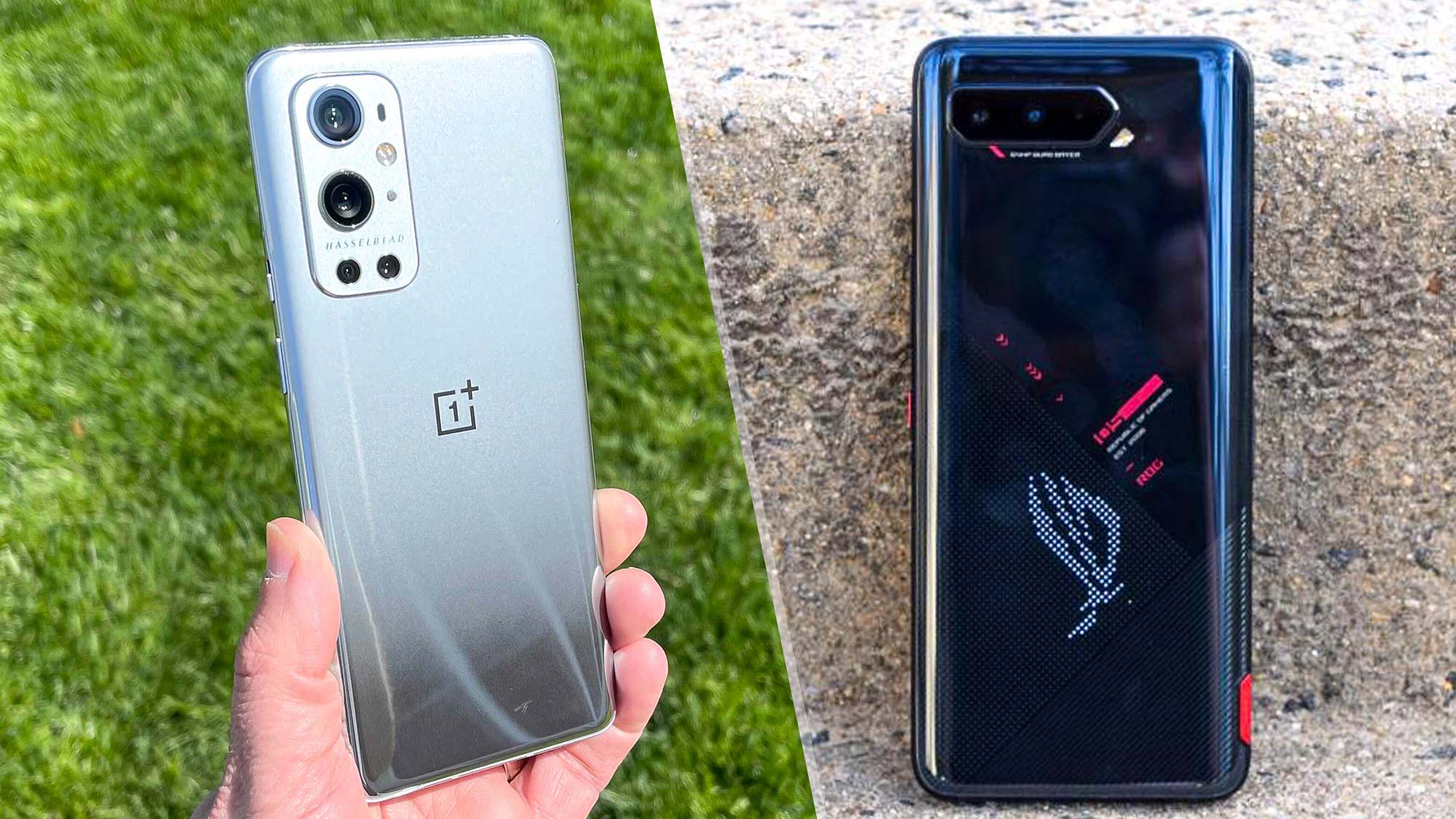
Mobile games have become a huge part of the gaming world over the years and they’re a major factor for a lot of people when it comes to choosing their next phone. Mobile gaming has become so popular, in fact, that phone makers have created a new class of mobile gaming phones, with features designed to optimize your game-playing experience.
That’s the case for the Asus ROG Phone 5, which immediately staked its claim to the title of best gaming phone when it came out earlier this year. It’s certainly an impressive device, thanks to its big screen, Snapdragon 888 processor and dedicated gaming features.
- The best Android phones you can buy
- OnePlus 9 Pro vs. iPhone 12 Pro: How do they compare?
But you’ll find many of those same capabilities in top Android flagships, such as the OnePlus 9 Pro. And that raises the question — which is the better option if your primary concern with a mobile device is how well it handles demanding games?
The OnePlus 9 Pro and the ROG Phone 5 are the most powerful Android phones we’ve ever tested and reviewed. Both focus on different things, but they’re both very good gaming devices. In this OnePlus 9 Pro vs. Asus ROG Phone 5 face-off, we take a look at how these Android powerhouses stack up against each other, especially for gaming.
OnePlus 9 Pro vs. Asus ROG Phone 5: Specs
| Row 0 - Cell 0 | OnePlus 9 Pro | ROG Phone 5 |
| Starting price | $969 | £799 |
| Display | 6.7-inch AMOLED (3168 x 1440) | 6.78-inch AMOLED 2448 x 1080 |
| Refresh rate | 1 Hz - 120 Hz | 60 Hz - 144 Hz |
| CPU | Snapdragon 888 | Snapdragon 888 |
| RAM | 8GB, 12GB | 8GB, 12GB, 16GB |
| Storage | 128GB, 256GB | 128GB, 256GB |
| Rear cameras | 48MP wide, 50MP ultrawide, 8MP telephoto (3.3x optical), monochrome | 64MP ultrawide (f/1.8), 13MP ultrawide (f/2.4), 5MP macro (f/2.0) |
| Front camera | 16MP | 24MP (f/2.45) |
| Battery | 4,500 mAh | 6,000 mAh |
| Battery life | 10:40 (120Hz) / 10:38 (60Hz) | 12:23 (60Hz) / 10:53 (120Hz) / 10:27 (144Hz) |
| Measurements | 6.4 x 2.9 x 0.34 inches | 6.1 x 2.7 x 0.36 inches |
| Weight | 6.9 ounces | 8.39 ounces |
OnePlus 9 Pro vs. Asus ROG Phone 5: Price and availability
The OnePlus 9 Pro is available in the US starting at $969 for the 8GB/128GB model. At time of this writing, that variant isn’t available, though, so you’re limited to the 12GB/256GB version which costs $1,069. You can buy the OnePlus 9 Pro from T-Mobile or OnePlus directly in addition to retailers like Amazon and Best Buy.
You can also go for the regular OnePlus 9, which comes in the same storage configurations with some camera and display downgrades. The OnePlus 9 features the same hardware inside, just for a bit less than the Pro. The base 8GB/128GB model starts at $729, while the 12GB/256GB goes for $829.
The ROG Phone 5 is not available in the US yet, though Asus has promised North America news coming “soon.” For the base 8GB/128GB variant, you’ll pay €799/£799. That suggests a $799 price if and when this phone lands on US shores. You can upgrade to 12GB/256GB for €899/£899, or go with 16GB of RAM and 256GB of storage for €999/£999. While T-Mobile is the only carrier offering the OnePlus 9 Pro, that’s still one more than will likely feature the Asus ROG Phone 5, which you can only buy unlocked.
Winner: ROG Phone 5
OnePlus 9 Pro vs. Asus ROG Phone 5: Display
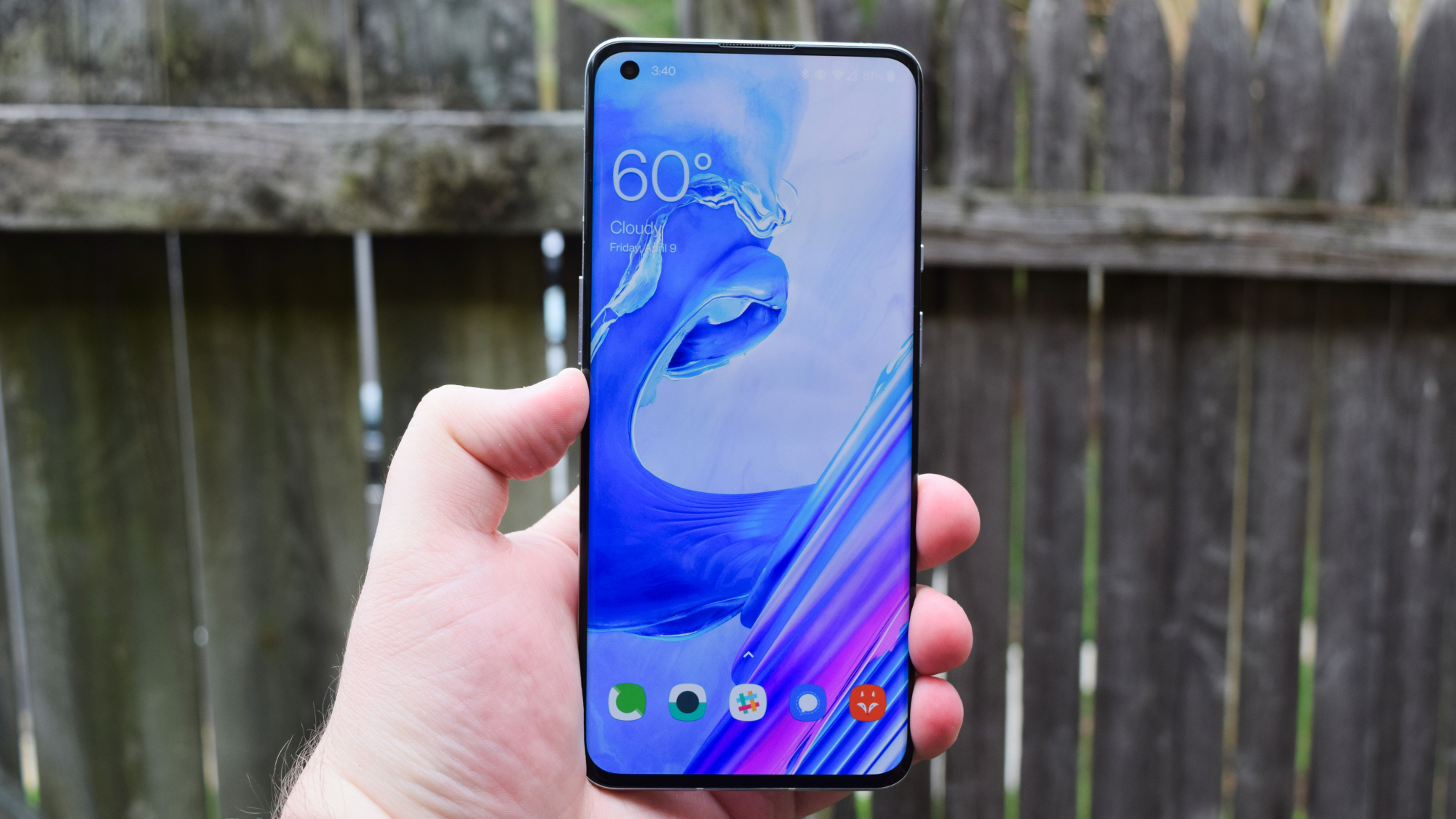
Both phones feature beautiful AMOLED displays with great brightness, amazing colors, and true, deep blacks. Both also feature dynamic, high refresh rates and are just wonderful to look at. In fact, the OnePlus 9 Pro and ROG Phone 5 displays are quite similar.
The OnePlus 9 Pro features a 6.7-inch 3168 x 1440 display with a 1 Hz - 120 Hz refresh rate, while the ROG Phone 5 sports a 6.78-inch 2448 x 1080 screen that can go up to 144 Hz. The ROG Phone 5 can lock at a specific refresh rate: 60 Hz, 120 Hz, or 144 Hz. You can also set it to auto mode and it will scale the refresh rate based on what you’re doing.
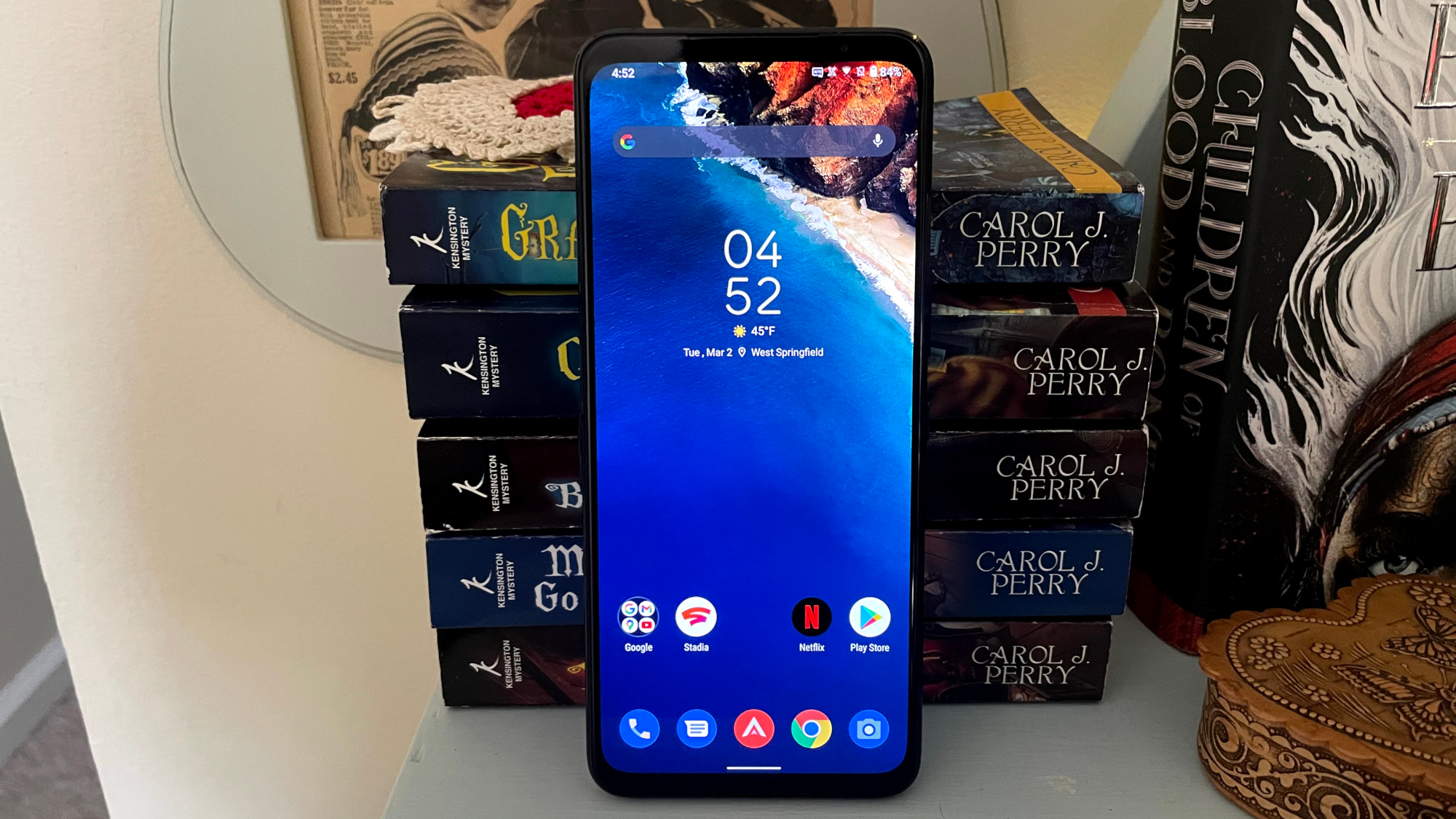
As far as colors go, both phones feature two display calibrations, Vivid and Natural, defaulting to Vivid in both cases. In the Vivid setting, the OnePlus 9 Pro has a higher Delta-E score of 0.32, while the ROG Phone 5 has a Delta-E of 0.29. (A score of 0 is perfect.) The ROG Phone 5 falls a bit behind the OnePlus in terms of color reproduction, managing 159.2% of the sRGB and 112.8% of the DCI-P3 gamuts. Compare that to the OnePlus 9 Pro’s 208.1% sRGB and 147.4% DCI-P3.
The ROG Phone 5 gets brighter at 748 nits in our testing, beating the OnePlus 9 Pro’s 722 nits, though both phones are more than bright enough for outdoor use. Frankly, they each have incredible displays and we’d be hard pressed to choose a winner. However, because the OnePlus 9 Pro can downclock all the way to 1 Hz for static images, we give it the win.
Winner: OnePlus 9 Pro
OnePlus 9 Pro vs. Asus ROG Phone 5: Performance
Both the OnePlus 9 Pro and ROG Phone 5 use the Snapdragon 888 processor from Qualcomm. This is the best chipset you can get in an Android phone and either performs as well as the other.
You can get a OnePlus 9 Pro with either 8GB or 12GB of RAM — the ROG Phone 5 also includes a 16GB variant alongside its 8GB and 12GB options. After a certain point, though, the ridiculous amount of RAM doesn’t mean a whole lot if the software doesn’t allow for more apps to hang out in memory.
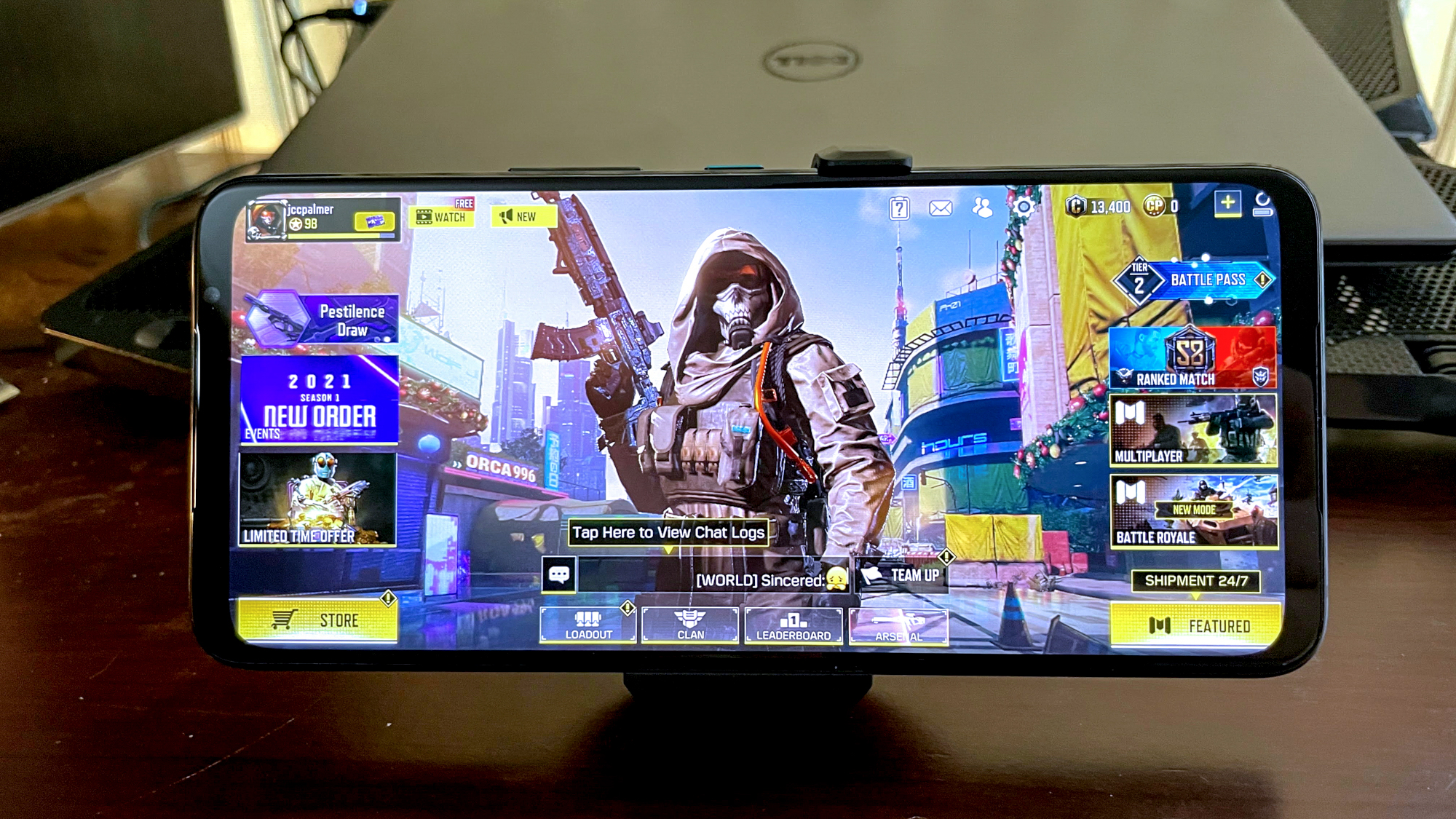
Looking at the performance metrics for both phones, they’re pretty darn close to equal. In Geekbench 5, the OnePlus 9 Pro scored 3,685 in multicore, the ROG Phone 5 scored 3,673. In 3DMark Wild Life Unlimited, both phones landed in the 34 frames per second area.
In my experience, both the OnePlus 9 Pro and ROG Phone 5 did well with the two games I mostly play, Genshin Impact and Call of Duty: Mobile. They stay relatively cool on their own, though the 9 Pro does get noticeably warmer after over thirty minutes of gameplay. I prefer the OnePlus 9 Pro for gaming simply because it’s lighter than the ROG Phone 5.
Winner: Draw
OnePlus 9 Pro vs. Asus ROG Phone 5: Battery life and charging
The OnePlus 9 Pro sports a 4,500 mAh battery with 65W wired charging and 50W wireless charging (provided you’ve got the necessary charging accessory). In its default dynamic 120 Hz mode, OnePlus’ phone lasted for 10 hours and 40 minutes in the Tom’s Guide battery test, which involves continuous web surfing over cellular until the phone runs out of power.
The ROG Phone 5 features a mammoth 6,000 mAh battery with 65W charging, though it lacks wireless charging capabilities. This phone has four screen refresh rate modes, three of which we tested. In the 60 Hz setting, the ROG Phone 5 lasted an incredible 12 hours and 22 minutes. At 120 Hz, it went for 10 hours and 52 minutes — at 144 Hz, it lasted for 10 hours and 27 minutes. All those numbers are better than the 10 hour average for most smartphones, and we include the ROG Phone 5 on our best phone battery life rankings.
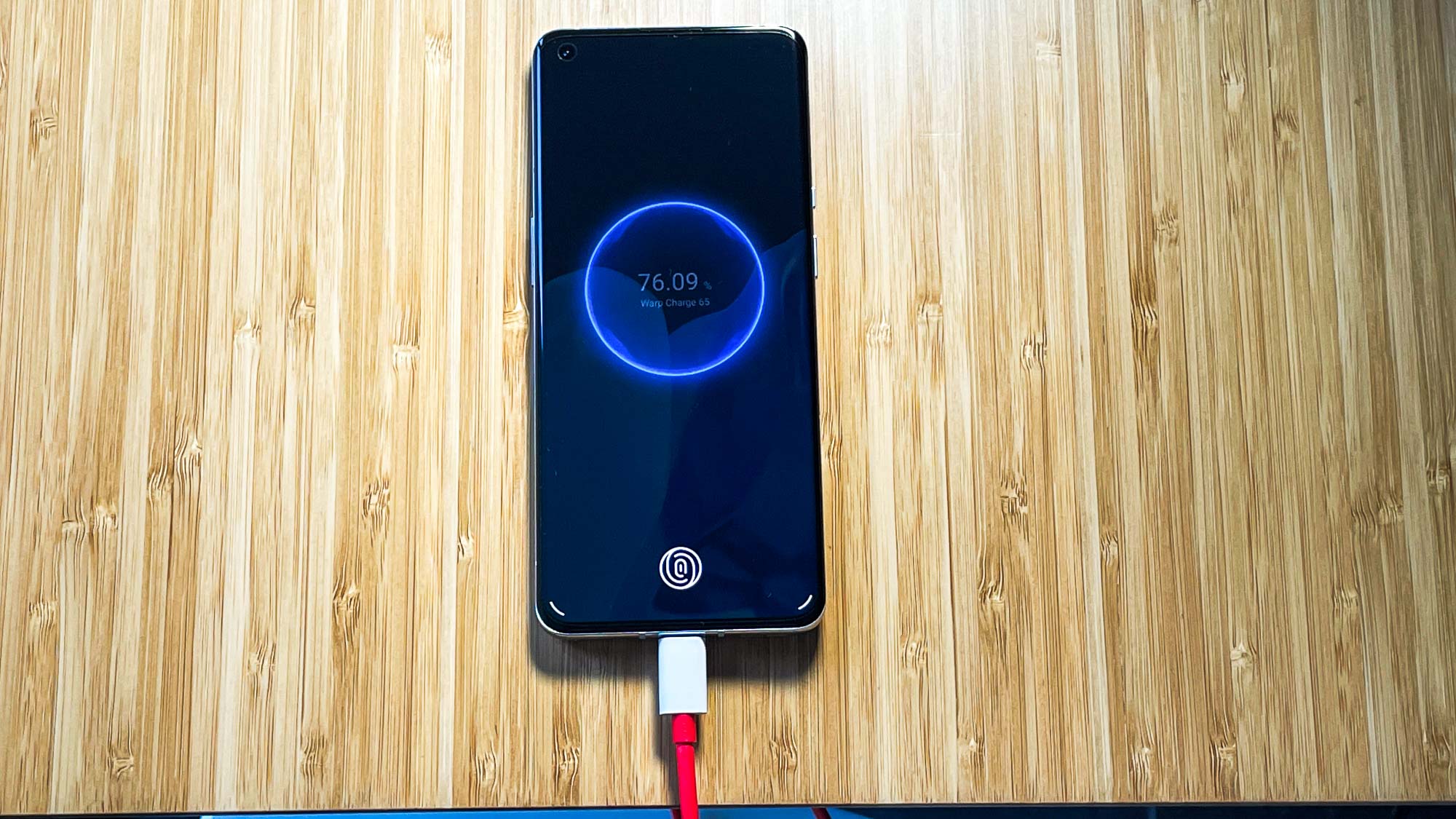
Both phones support up to 65W charging, but the OnePlus 9 Pro tops off faster due to the smaller battery capacity. You can recharge the phone to 99% in just 30 minutes. In the same amount of time, you can get 70% on the ROG Phone 5. Both phones destroy the Galaxy S21 and iPhone 12 series when it comes to charging speed.
Despite the ROG Phone 5 lasting a bit longer in its 120 Hz mode, we’re going to give the OnePlus 9 Pro the win here. Not only does it last nearly as long on a smaller battery, but it charges to full faster. It also supports wireless charging.
Winner: OnePlus 9 Pro
OnePlus 9 Pro vs. Asus ROG Phone 5: Cameras, software, and other features
The OnePlus 9 Pro crushes the ROG Phone 5 in terms of cameras — there’s just no contest. While we wouldn’t say that the ROG Phone 5 is terrible, it certainly can’t hold a candle to the best camera phones, especially the iPhone 12. And the OnePlus 9 Pro does measure up well, as OnePlus put a major focus on camera improvements with this model.
In both of the above photos, you can see some clear differences. In the picture of the flowers, the OnePlus 9 Pro properly accounted for the direct sunlight and toned down the image accordingly. The ROG Phone 5 overexposed somewhat and thus the scene looks a bit washed out.
In these images of the trees, the phones came out more or less the same. Both pictures show how verdant the leaves are, even if the ROG Phone 5 over-saturates the green just a tad.
Beyond the cameras, both the OnePlus 9 Pro and ROG Phone 5 take a clean approach to software. They each run Android 11 — the OnePlus 9 Pro has OxygenOS 11 sitting on top while the ROG Phone 5 uses ZenUI. Both skins are relatively minimal, offering pretty close to a Pixel-like experience.
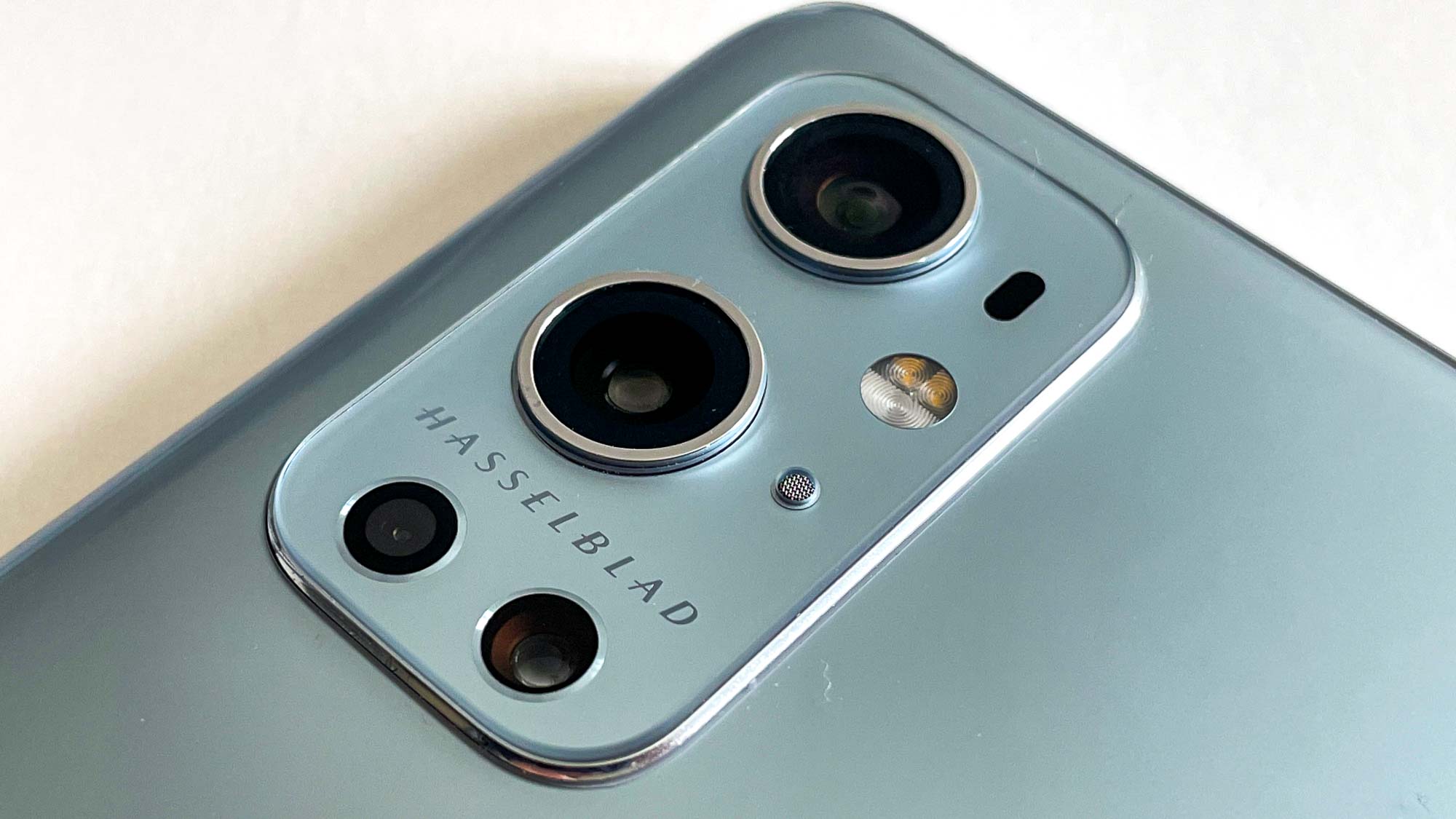
Either phone provides a lot of features and tweaks under the hood. The ROG Phone 5, in particular, gives you access to a lot of gaming settings to tweak.
Asus has definitely improved its software support in recent years, though we haven’t heard plans on the support schedule for the ROG Phone 5. We know the OnePlus 9 Pro will get two more Android OS updates and three years of security patches. OnePlus isn’t super speedy about supporting older phones, so we expect that the rate at which the 9 Pro receives updates and patches will slow when the One Plus 9T and 10 Pro come out over the next 12 months.
One thing that gaming phones pride themselves on nowadays is providing extra bits to improve your game. The ROG Phone 5 uses ultrasonic shoulder triggers that you can map to various actions in-game. They’re quite sensitive and customizable.
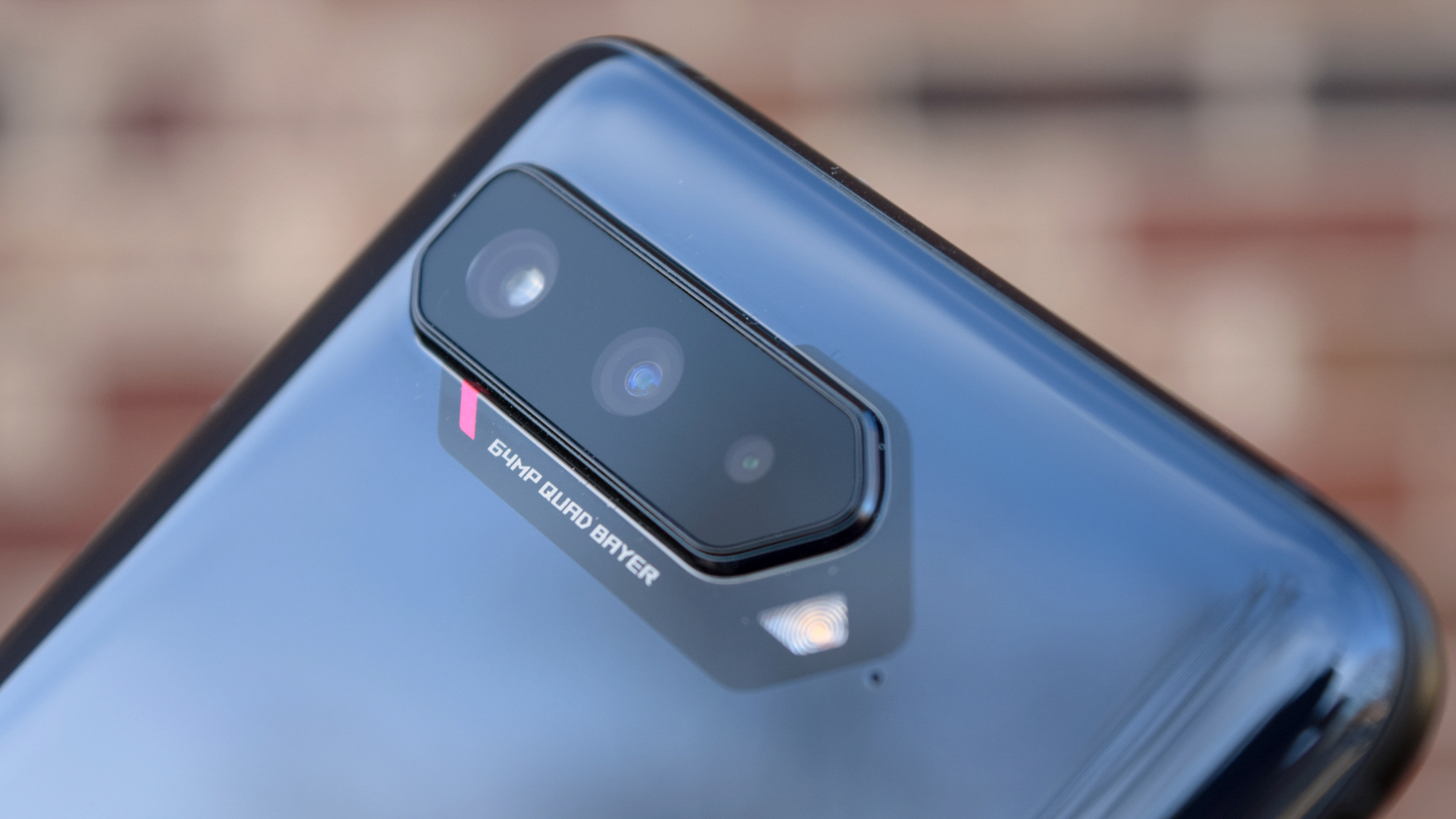
You can buy an optional cooling fan that clips onto the back of the phone, powered by the pogo pins on the ROG Phone 5’s frame. This helps regulate temperatures, and also provides programmable paddles and a kickstand.
The OnePlus 9 Pro doesn’t offer anything else like shoulder triggers, since it’s marketed as a mainstream phone. But that doesn’t mean gamers should ignore it due to a lack of gaming-centric flourishes. Honestly, I found that the ROG Phone 5 improved my mobile gaming experience very little. In Genshin Impact and Call of Duty: Mobile, the shoulder buttons felt more like a hindrance than a help.
Because of its superior camera performance and clearer update schedule, we give the OnePlus 9 Pro the advantage here.
Winner: OnePlus 9 Pro
OnePlus 9 Pro vs. Asus ROG Phone 5: Verdict
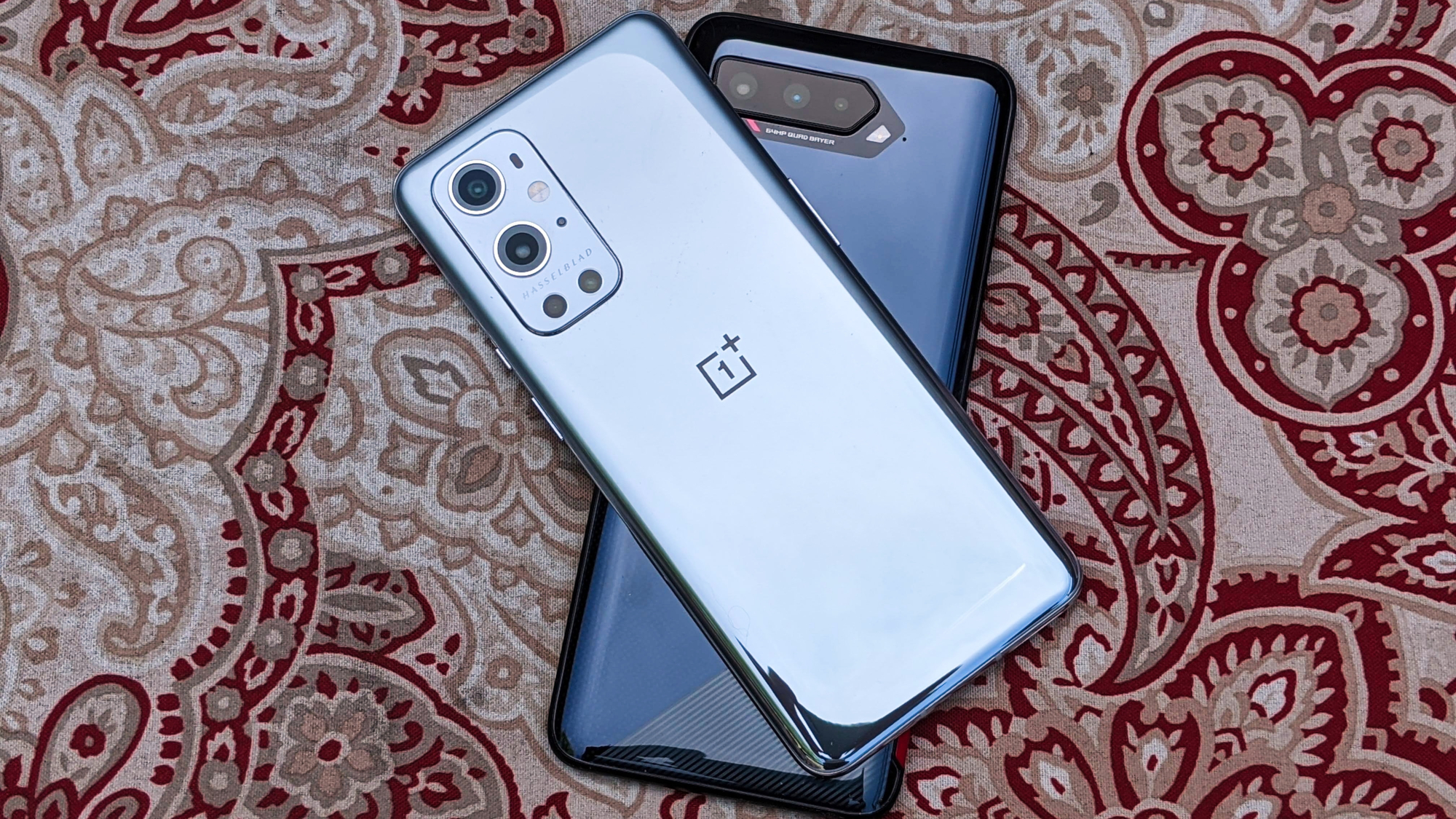
| Row 0 - Cell 0 | OnePlus 9 Pro | ROG Phone 5 |
| Price (10 points) | 8 | 9 |
| Display (20 points) | 20 | 19 |
| Performance (20 points) | 19 | 19 |
| Battery (20 points) | 18 | 17 |
| Camera (15 points) | 13 | 10 |
| Software (15 points) | 15 | 14 |
| Overall (100 points) | 93 | 88 |
A OnePlus 9 Pro vs. Asus ROG Phone 5 comparison is pretty close, all things considered. We’re looking at two powerful devices with beautiful displays and super fast charging. Really, either one would be a good gaming companion.
Thanks to its far superior cameras, the OnePlus 9 Pro is a better all around phone than the ROG Phone 5. The 9 Pro matches the ROG Phone 5’s raw performance and offers a fast refreshing dynamic display, even if the Asus device can refresh at faster speeds. Meanwhile, the extra bits and bobbles on the ROG Phone 5 don’t really make it a good day-to-day phone. Sure, having ultrasonic triggers is cool for games where it works well, but that’s a limited use case.
Someone looking for a phone to game on while doing little else will conclude that the ROG Phone 5 is a fine purchase. But the OnePlus 9 Pro can match many of the things Asus’ phone does well, and top it in other areas where the ROG Phone 5 struggles.
Sign up to get the BEST of Tom's Guide direct to your inbox.
Get instant access to breaking news, the hottest reviews, great deals and helpful tips.

Jordan is the Phones Editor for Tom's Guide, covering all things phone-related. He's written about phones for over six years and plans to continue for a long while to come. He loves nothing more than relaxing in his home with a book, game, or his latest personal writing project. Jordan likes finding new things to dive into, from books and games to new mechanical keyboard switches and fun keycap sets. Outside of work, you can find him poring over open-source software and his studies.
